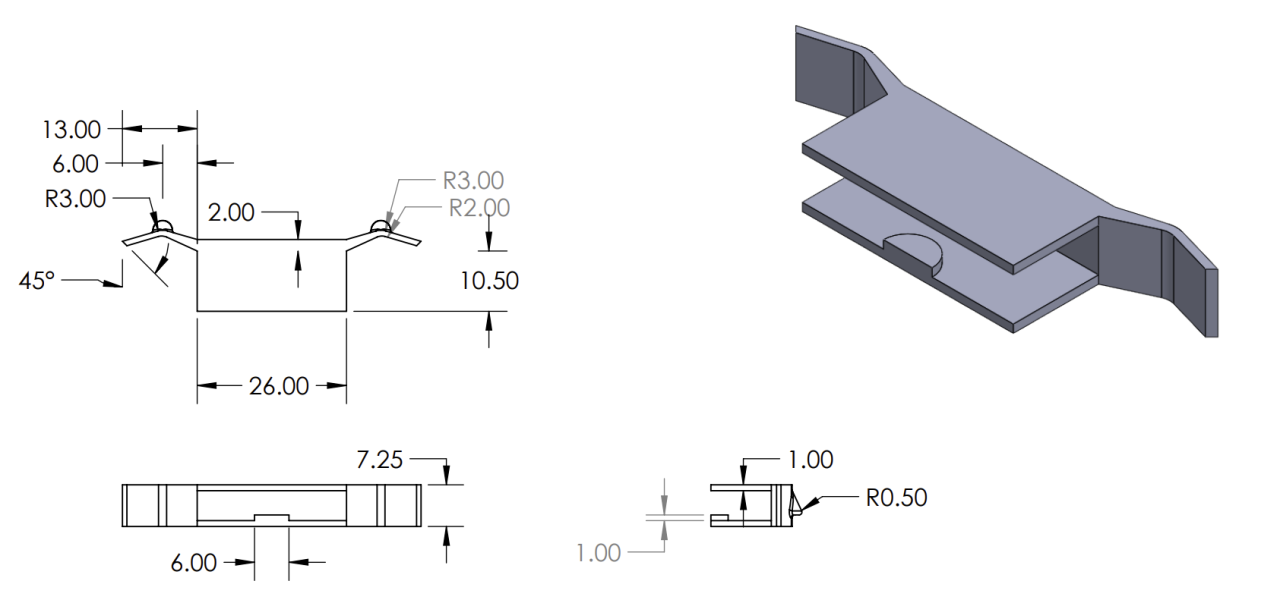
The Growing Trend of Replacing OEM parts with 3D Printed Parts
For various reasons, original equipment manufacturers (OEMs) are not always the best source for replacement parts. A growing number of people and companies are looking to 3D printing as a way to replicate parts that they otherwise would struggle to procure. This is especially true in the automotive, construction, and hardware technology industries. This article covers three examples of replacement part projects Jett 3D has worked on in the past.
Mercedes-Benz Classic Car Parts

The automotive industry is ripe for 3D printing opportunities. As certain car models age and become more rare, the OEMs have to make decisions about the value of continuing to produce parts for those models. At a certain point, it no longer makes sense to rely on traditional manufacturing of parts that are rarely needed. This is when 3D printing becomes a viable manufacturing option.
We at Jett 3D have reverse-engineered, 3D modeled, optimized, tested, and 3D printed two different Mercedes-Benz automotive parts. Both projects resulted in low-volume production runs of parts for resale. The first was an interior trim clip used for holding seat fabric to the frame of the vehicle. We utilized one of the last remaining OEM trim clips to replicate the 3D design, made improvements to the design, and 3D printed several hundred in durable HP MJF PA11 material.

The second project was the production of a windshield wiper part that needed to be able to withstand exposure to windshield wiper fluid and also have enough flexibility to snuggly fit onto a metal component. This meant that on top of reverse engineering, 3D modeling, and 3D printing, we also needed to do material testing to ensure long term functionality. After three rounds of testing, we decided on Carbon’s DLS RPU 70 material. An initial production run was completed with the expectation to do more in the future.
The upfront time and costs that went into developing the automotive 3D model of the parts were far less than the startup costs for traditional manufacturing. Additionally, once 3D models are developed, new parts can be printed and delivered in a matter of days rather than weeks or months.
Maspeth Environmental Light Fixture

Another industry that is in frequent need of replacement parts is construction. Not only do they rely on lots of unique parts, but they also tend to work on tight timelines where delays in orders can hold up entire projects. Architecture, engineering, and construction (A/E/C) companies often have a leg-up when it comes to producing 3D parts because of their familiarity with 3D scanning and CAD models.
Maspeth Environmental, a local NYC remediation company, came to us with an urgent need for replacement light fixture covers. The original covers had been broken during construction and were no longer being produced. This meant that the company faced the prospect of having to replace the entire expensive fixture just to be able to get new light covers.
Luckily, due to their proximity to our Long Island City office in NYC, the Maspeth Environmental team was able to deliver us the original broken parts within a matter of hours after first speaking. This meant our team could immediately assess the parts and begin reverse engineering and 3D modeling them. We also were able to quickly order a transparent FDM PLA filament that mimicked the original material. Within a week, we were able to 3D model, test-fit, and 3D print multiple parts for installation. This provided significant cost savings compared to replacing the entire fixture.
Wahoo KICKR Seatpost and Handlebar Collar

Given the rapid pace at which hardware tech is being produced these days, it makes sense that 3D printing is becoming a common solution for replacement parts. 3D prototyping has long been common practice in the hardware industry so moving into part production is a natural extension of the technology.
The fitness technology industry experienced an explosion in popularity during the COVID pandemic due to people being unable or unwilling to attend gyms. This meant a lot of new hardware was pushed out to consumers quickly, and sometimes designs had flaws that weren’t immediately recognized. A relevant project that we worked on was the seatpost and handlebar posts on the Wahoo Kickr stationary bike. After some time, the posts would start to slip due to the clamps losing their tightness. The solution was a collar that fits around the posts and allows the clamp to hold tightly.
A Kickr rider took it upon themselves to create the 3D model of the part and share it with other riders. However, most riders didn’t have access to a 3D printer, especially an industrial one that could produce the collar in a durable material. Jett 3D was approached about printing these parts in HP MJF PA11 so that riders could use their bikes without risk of injury from falling seats and handlebars. We were able to do a production run within a matter of days and sell the parts at a low price because the 3D design and modeling was done for free.